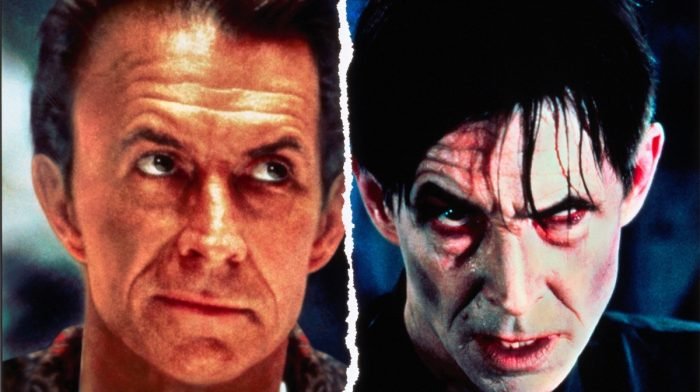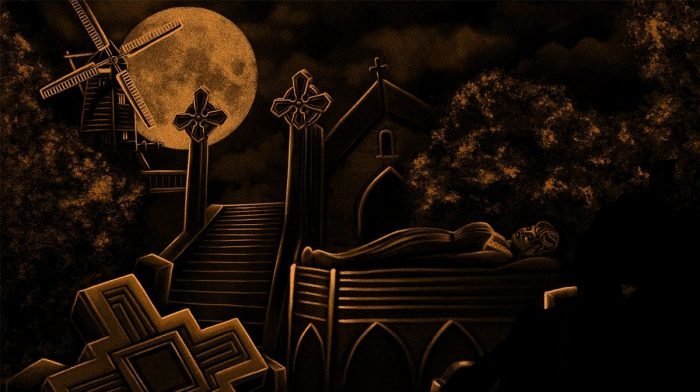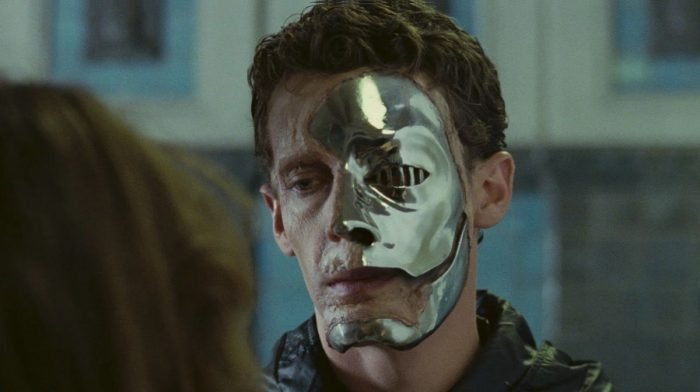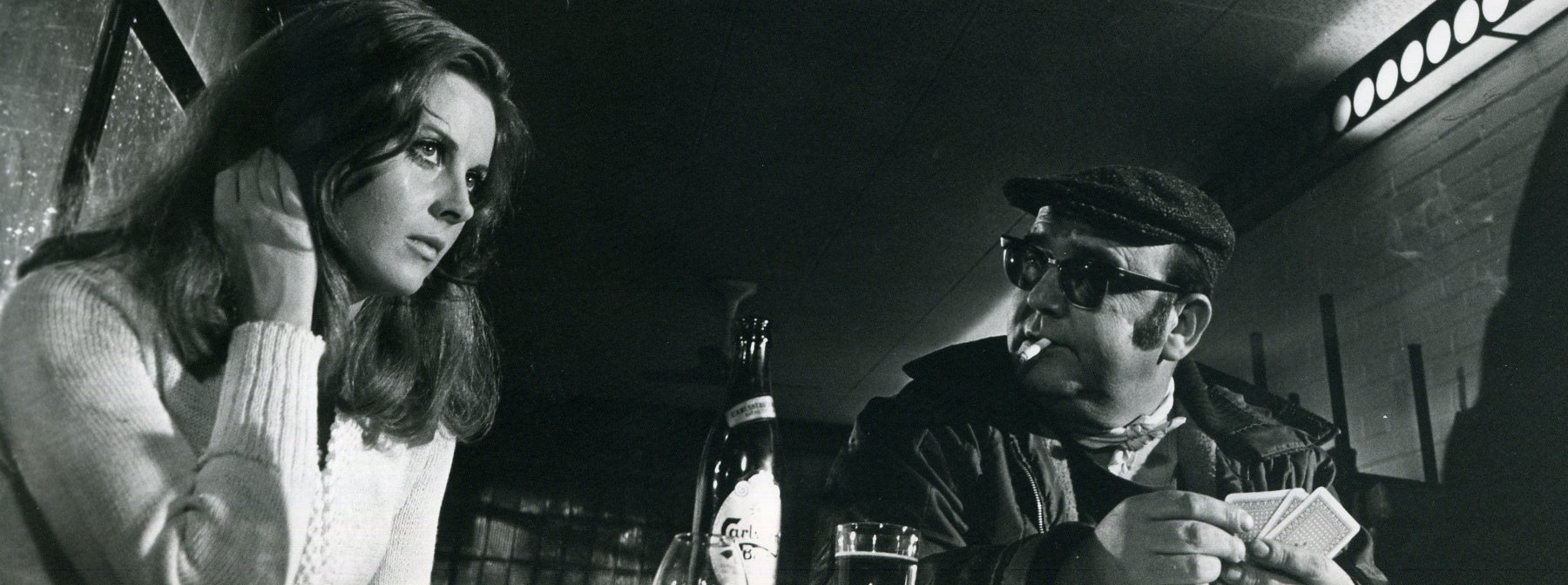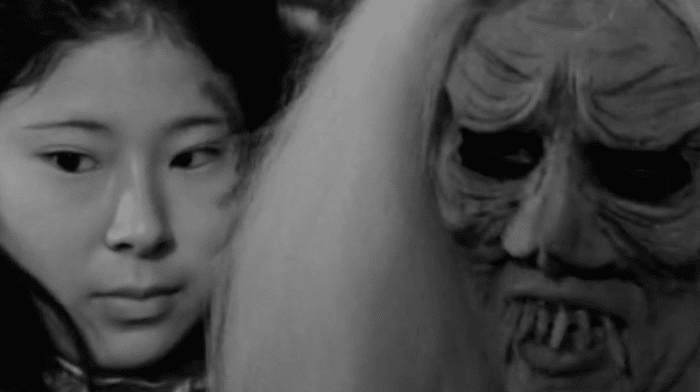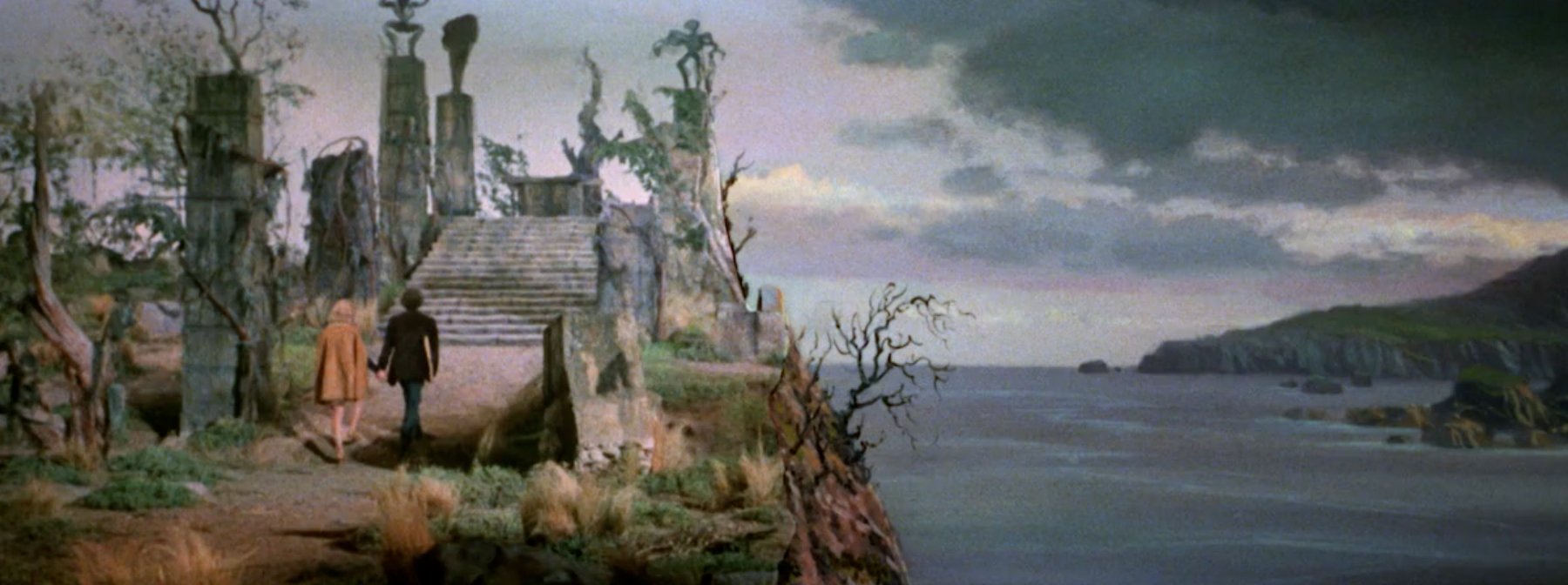Whether it be the spectacle of Close Encounters of the Third Kind (1977), or the lo-fi urgency of The McPherson Tape/Incident in Lake County (1989), filmmakers have found inventive ways to engage audiences by drawing from the wonder and fear associated with UFO encounters and alien visitation. Chema García Ibarra’s The Sacred Spirit (2022) is a newer entry in the sweepstakes that uses public belief in strange phenomena to cover up a more insidious conspiracy unfolding in the story. These examples are complemented by a diverse list of offerings compiled here and others that use alien abduction to examine a rich tapestry of themes like marital strife, financial insecurity, familial estrangement, loss of bodily autonomy, and retribution.
X-Tro (1982)
The promotional poster for X-Tro (1982) teased potential audiences with a brilliant and ominous tagline, “Not all extraterrestrials are friendly.” It was an obvious jab at Steven Spielberg’s heart-tugging box office phenom E.T. The Extraterrestrial (1982), which at the time was the highest grossing film in history. The story involves a man named Sam (Philip Sayer) who disappears in a brilliant light from the sky, leaving behind his wife Rachel (Bernice Stegers) and son Tony (Simon Nash), who witnessed the event. Three years later, Sam returns to reclaim his son, who has inherited newfound paranormal abilities, laying the groundwork for a gooey alien invasion.
The gloriously weird film was directed by Harry Bromley Davenport, who co-wrote the moody classic The Haunting of Julia (1977). It was marked as a “video nasty,” by the British government, and features wonderful alien grotesquery and a plot that defies easy description. X-Tro boasts spectacular practical makeup effects, including a bizarre spindly alien creature, man-sized toys brought to life, and a woman birthing a fully grown adult man. At its core, the film uses its outrageous attributes as a portrait of family turmoil in the aftermath of a loved one’s lengthy separation.
Fire in the Sky (1993)
Robert Lieberman’s Fire in the Sky is based on a real life account of former abductee Travis Walton, whose book “The Walton Experience” served as the foundation for this eerie biopic. The story revolves around Travis’ disappearance, who went missing as part of a logging operation in an Arizona forest. The investigating authorities, led by Lt. Frank Watters (James Garner), suspect that Travis was murdered by members of Travis’ crew, including his best friend Mike (Robert Patrick). The tight-knit group of friends insist he was overcome by an otherworldly force, and abandoned him in the woods. Several days later, a traumatized Travis returns to describe his horrific abduction by fearsome aliens, and is met with harsh skepticism.
Lieberman attempts to inject some ambiguity in the early goings by initiating viewer doubt. Blinding truck headlights coming up over the horizon or the flashing lights of a railroad crossing gate lead us to think Travis’ friends may be delusional, and the suspects are persecuted by members of their community. In the film’s riveting third act, Lieberman takes us on a deeply distressing journey into the bowels of an alien ship, a visual detailing of Travis’ nightmarish experience, invasively examined by terrifying alien researchers, a pulse-pounding sequence responsible for the film’s enduring notoriety.
Progeny (1998)
Brian Yuzna’s place in the genre is solidified by his partnership with Stuart Gordon, but his own directorial output is littered with cult gems like Society (1989), Bride of Re-Animator (1990), and Return of the Living Dead 3 (1993). Progeny is his take on an alien abduction scenario, from the point of view of a professional couple, Sherry (Jillian McWhirter) and Craig Burton, trying to conceive a child. One night while having sex, they are enveloped in a blinding light and lose all sense of time for two hours. When Sherry becomes pregnant, the couple’s ensuing nightmares and memory lapses lead them to believe Sherry’s been artificially impregnated by an alien race bent on creating a hybrid species.
Through allegory Yuzna effectively invokes pregnancy anxieties and cultivates a discussion of a woman’s control of her own body, provoking unease using dream-like images which often blur the line between fantasy and reality.
Mysterious Skin (2004)
Gregg Araki’s Mysterious Skin (2004) is an outlier on this list, chiefly because its dramatic dynamics reside far outside of conventional UFO storytelling. The film is a bold and provocative examination of the devastating effects of childhood sexual abuse. Araki uses parallel storylines featuring two young men, Neil (Joseph Gordon-Levit), a male prostitute, and Brian (Brady Corbet), a disassociated young man, whose lives were forever altered after being molested by their little league baseball coach (Bill Sage). Neil explores his sexual urges without thought for consequences, while Brian is obsessed with the idea that he was abducted by aliens.
Araki’s film isn’t sci-fi by any stretch, but uses lyrical, often dreamy imagery (accentuated by the soundscapes of Harold Budd and Robin Guthrie) juxtaposed with unflinching storytelling to tackle its themes with raw honesty. The film features fearless, committed performances from its cast, who bravely embark on Araki’s bold expression of pain, sprinkled with glimmers of hope.
Altered (2005)
Altered could be viewed as a spiritual companion to Fire in the Sky, a revenge-minded horror film that reverses the archetypal roles. It features five friends who were taken by alien abductors on a hunting trip, only four of which returned. Years later, they capture a mind-controlling alien creature responsible for their ordeal and murder of their friend, chaining it up in a dilapidated garage, while plotting their vengeance. The story presents an intriguing morality play not unlike Dennis Villaneuve’s Prisoners (2013), in which the captors hold conflicting points-of-view on how to handle their dangerous captive, resulting in fractured loyalties and mistrust.
Eduardo Sánchez, in his first solo effort after co-directing The Blair Witch Project (1999), uses the cabin-in-the-woods motif to chilling effect, and can be read as a critique against vigilantism. The only misstep in this regard is Sánchez’s cultivation of an especially hostile creature which garners little sympathy from the viewer, thus diluting its message. Sanchez forgoes lofty thematic ambitions in favor of telling a thrilling story bent on delivering on the splattery goods, which it does with aplomb.
Dark Skies (2013)
Dismissed by many critics upon release, Dark Skies is a tightly constructed and suspenseful account of a suburban family’s encounter with an invasive presence who materializes in their home. The Barrett family – mother Lacy (Keri Russell), father Daniel (Josh Hamilton), older son Jesse (Dakota Goyo), and younger son Sammy (Kadan Rockett) – is burdened by financial insecurity due to Daniel’s unemployment. Their tenuous lives are plagued by strange late night occurrences, prompting behavioral changes in the entire family, which they attribute to stress and Jesse’s contention with early adolescent pains. After activating security cameras, they discover that an alien life form has taken an interest in them, and in particular, their son Sammy.
Filmmaker Scott Stewart subverts the supposed security of suburban life, and stages several tense scenes of shadowy figures looming over the family, controlling their actions under the watchful eye of their useless home surveillance equipment. Dark Skies is a slow-burn that fully utilizes its visual strengths, putting its characters through an emotional wringer, and ending on a downbeat note.
Honeymoon (2014)
Director and screenwriter Leigh Janiak (Fear Street Trilogy) uses new marriage anxieties as a foundation for her tense and disturbing feature debut. The film follows a newlywed couple Bea (Rose Leslie) and Paul (Harry Treadaway) honeymooning at a secluded lake cabin owned by Bea’s family. A bright light lures Bea away late one night, and Paul finds her wandering in the woods, then later uncovering her shredded clothing hidden in the bushes. When Bea displays bizarre personality changes and memory lapses, Paul suspects she’s been assaulted by a past lover Will (Ben Huber). As their once loving relationship frays, Bea discovers her body is host to a monstrous interstellar entity bent on controlling her.
Janiak’s commentary on marital strife, masculine insecurity, and loss of identity is as much an ode to the psychological turmoil of Ingmar Bergman as it is Cronenbergian body horror, and the film’s climax ranks among the subgenre’s bleakest.
Ejecta (2014)
Chad Archibald and Matt Wiele’s Ejecta anticipates a hostile alien invasion with potential for global catastrophe. UFO enthusiast and filmmaker Joe Sullivan (Adam Seybold) receives an email from William Cassidy (Julian Richings), a former alien abductee living off the grid, relishing an opportunity to interview the reclusive survivor. Cassidy reveals that a solar flare and subsequent coronal mass ejection will result in a disruption of all electronic devices on Earth, connected to the aliens who kidnapped him. Soldiers raid Cassidy’s home and kidnap him, and he subsequently endures interrogation by sadistic Dr. Tobin (Lisa Houle) who uses alien torture devices. Their mission to stop a war-like alien race is jeopardized by Tobin’s cruel tactics when Cassidy responds in unexpected ways.
Ejecta’s non-linear structure bounces between found footage style and traditional filmmaking techniques, utilizing sound effects and fleeting glimpses of alien creatures to jarring effect. Directors Archibald (Bite, The Drownsman) and Wiele (The Hoard) overcome low-budget challenges, expressing the lofty ideas through pointed dialogue scripted by weird fiction scribe Tony Burgess (author of “Pontypool Changes Everything”) whose nihilistic premise is balanced by humanist touches. With potential cataclysm looming over the story, the cruelty of the humans is indistinguishable from their alien counterparts, two sides of the same ruthless coin.
Love and Saucers (2017)
Love and Saucers is an affecting documentary detailing a love affair between an artist and his alien abductor. The film chronicles 72-year-old artist David Huggins who claims to have lost his virginity to an alien when he was 17 by a female alien who continued to visit him at various points in his life. He subsequently chronicled his experience through surreal, often erotic paintings depicting their relationship as a means of expressive therapy.
Documentarian Brad Abrahams never makes his subject a source of ridicule or frames him as delusional. Instead, he delivers a sensitive and touching portrait of a tortured outsider whose strange artistic journey becomes one of emotional and spiritual healing.
The Sacred Spirit is available on Blu-ray from Arrow Video.

